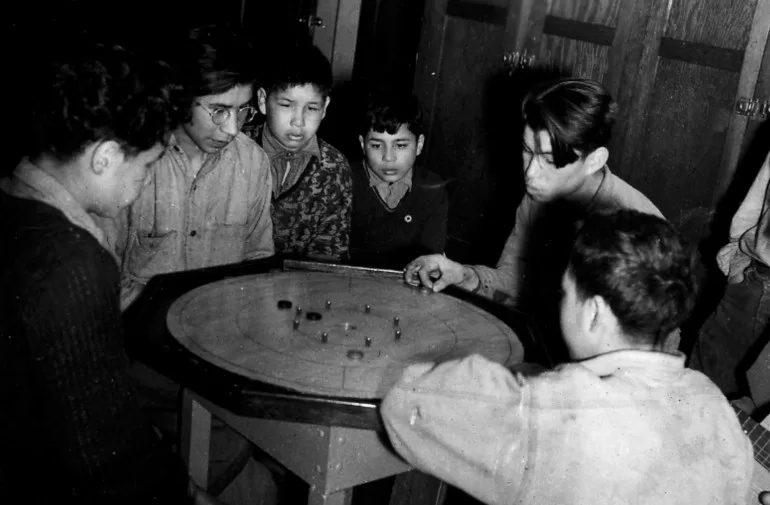Warning: The story below contains details of Indigenous boarding schools that may be upsetting. The US National Suicide Prevention Lifeline is available at 1-800-273-TALK (8255).
At least 973 Indigenous children died while attending boarding schools run or supported by the United States government, a federal report has found, prompting calls for an apology for the pain suffered at the abuse-riddled institutions.
The report, released on Tuesday and commissioned by US Secretary of the Interior Deb Haaland, found dozens of marked and unmarked graves at 65 of the more than 400 US boarding schools that were established across the country.
The findings don’t specify how each child died, but the causes of death included sickness, accidents and abuse during a 150-year period that ended in 1969, officials said.
The schools were set up to forcibly assimilate Indigenous children into white society, and survivors have described the intergenerational trauma their families and communities continue to experience as a result of the institutions.
Children were often prevented from speaking their own languages and separated from siblings, and many were subjected to physical, sexual and psychological abuse.
On Tuesday, Haaland – the first Indigenous person to lead the US Department of the Interior – said the investigation aimed “to provide an accurate and honest picture” of what happened.
“The federal government – facilitated by the Department I lead – took deliberate and strategic actions through federal Indian boarding school policies to isolate children from their families, deny them their identities, and steal from them the languages, cultures and connections that are foundational to Native people,” she said in a statement.
“The Road to Healing does not end with this report – it is just beginning.”
Indigenous community leaders in the US and its northern neighbour Canada – which also operated similar forced-assimilation institutions for Indigenous children – have called on authorities to fund investigations into unmarked graves at the former school sites.
The discovery of hundreds of suspected grave sites in Canada’s westernmost province of British Columbia in 2021 prompted a national reckoning, with several communities launching searches for the remains of children who never came home.
More than 150,000 First Nation, Inuit and Metis children in Canada were forced to attend the institutions – known as residential schools – between the late 1800s and 1990s.
In the US, hundreds of thousands of children were forcibly placed in boarding schools between 1869 and the 1960s, according to the National Native American Boarding School Healing Coalition.
The coalition says on its website that by 1926, nearly 83 percent of school-aged Indigenous children were attending the institutions.

‘A forgotten history’
The findings in Tuesday’s report follow a series of listening sessions across the US over the past two years in which dozens of former students recounted the harsh and often degrading treatment they endured while separated from their families.
In an initial report released in 2022, officials estimated that more than 500 children died at the schools, which the federal government had supported through laws and policies.
The schools, similar institutions and related assimilation programmes were funded by more than $23bn in inflation-adjusted federal spending, US officials determined.
Religious and private institutions that ran many of the institutions received federal money as partners in the campaign to “civilize” Indigenous students, according to Tuesday’s report.
The Interior Department officials offered eight recommendations for the US government, including “issuing a formal acknowledgment and apology … regarding its role in adopting and implementing national federal Indian boarding school policies”.
They also urged Washington to invest in remedies for the system’s continuing effects; to establish a national memorial to acknowledge and commemorate all those affected, and to identify and repatriate the remains of children who died at the schools.

Donovan Archambault, 85, of the Fort Belknap Indian Reservation in Montana, said he was sent away to boarding schools beginning at age 11 and was mistreated, forced to cut his hair and prevented from speaking his native language.
He said he drank heavily before turning his life around more than two decades later, and never discussed his school days with his children until he wrote a book about the experience several years ago.
“An apology is needed. They should apologise,” Archambault told The Associated Press news agency on Tuesday. “But there also needs to be a broader education about what happened to us. To me, it’s part of a forgotten history.”
